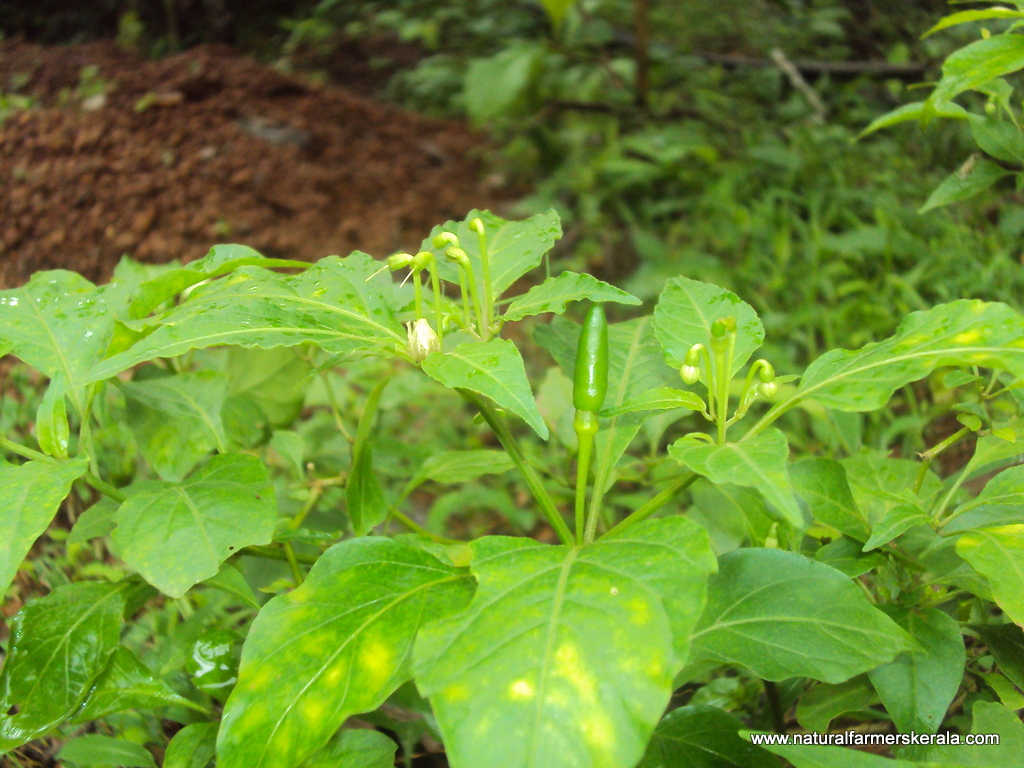How to Grow Kanthari Mulaku – Bird’s Eye chili of Kerala

KANTHARI MULAKU (Jeeraka Paranki/Bird’s Eye chili/Thai Pepper) are some of the common names of this chilli.
Kanthari mulaku is a chilli pepper commonly found in Kerala, Meghalaya and few other Asian countries. Some also call it Mouse/Rat droppings.
It is know as bird’s eye chilli because birds love to pick the ripe chilli, Black drongo is one of the main contender for eating bird’s eye chilli in Kerala.
Chillies are very small in size(not more than 2-3 cm)yet pungent and hot, this chillies will make your eyes water if you eat one. Most kanthari mulaku sold in Kerala market are hybrid ones, It will be larger in size and will be mild in flavour and spice content.
Bird’s eye chilli flower faces down and chilli is upward facing the sky.


Bird’s Eye chili is one among the ten hottest chilli peppers in the world.
Kanthari is difficult to find in supermarket or other vegetable shop because it is considered some what native fruit in Kerala. All the native varieties are looked down by officials and the whole community. But Kanthari also has a different issue; It is very lobar intensive to harvest and production is very low as compared to other chillies.
Medicinal Values and Health Benefits of Birds Eye chilli Kanthari
- Kanthari helps in increasing appetite by stimulating the gut and is very effective in controlling flatulence.
- It is high in Capsaicin. It is very effective in controlling cholesterol levels. When you eat chillies your body temperature rises. To bring back body to normal temperature it would burn more calories, which will make you lose weight and waste elimination speeds up.
- Indigenous people used this chilli to treat bruises and swelling. It makes blood thin ultimately clearing the bruised or damaged area and supplying fresh blood to the affected parts.
- Some also claim it makes you extremely alert.
- Bird’s eye chilli was also traditionally used to ease arthritis pain.
- Chillies can also be used as an insect repellent when crushed with water. However when there is cheaper alternate like cows urine, why use chillies.
- I am not sure if this is practised even today. After delivery of babies; mothers are given a glass of kanthari juice.
Smallest Kanthari is the best. Kanthari compared with average chilli.

Green or ripe chillies can be used for cooking or can be eaten raw with other dishes. In Kerala christian community(specially farmers) eat them a lot mostly with kappa(cassava) or in the form of thenga chammanthi(coconut chutney).
It has a very distinct smell and imparts great flavour to the food. Especially butter milk.
This is a perennial plant bearing chillies through out the year if taken care(expect for a few months). Plant reaches a height of 1.5 to 2 meters. They are shade loving plants and need regular supply of water. It with withstand direct sunlight if adequate water is supplied but may not fruit.
If you ignore this plant after sowing. During summer months leaves will wither and plant will go into hibernation, provided it is in open ground and not in a flower pot. When it starts to rain this plant will get back in action. This plant lives for 6 to 7 years. However after 3 to 4 years production may drop.
It is ideal for inter cropping with coconut and other plantation as kanthari does not need direct sunlight. If the plant gets damaged because of coconut or other tree branches falling on the plant; it will grow back provided the lower portion of the steam is intact.
It needs no special fertilizer. Just cow dung slurry every fortnight is more than enough for good production.
Chillies can be harvested when matured or after it has ripen it can be sun dried and used for a long time. Flavour and spice content is locked even in dried form.
How to grow Kanthari chillies from seed
- Best time to start preparing saplings is by end of March.
- Pick some fully ripe red chillies
- Place the chillies in an envelope or between newspaper and rub it well so that all the seeds are separated from the flesh. Now collect all the seeds in a shallow container and pour some hot water(Not boiling water, but should be considerably hot) Rub the seeds well keeping them in the hot water. (Please wear a gloves or cover your hands with coconut oil to avoid burning sensation in hand, Its becomes unbearable for 2 or 3 days on a stretch if not taken care. Don’t dare to touch the hand on extreme parts of your body. Oil dissolves capsaicin attached to your skin, repeat oil application and wash with soap for several times. This will ease the pain but not immediately cure).
- Seeds that are floating on the water discard them as they are hollow and will not germinate.
- Now repeat the process with some fresh hot water and clean all the outer membrane on the seeds(In nature this process happens inside birds intestine, here we are trying to replicate the same).
- Take the seeds out of water and add some ash from burned leaves(Mango leaf ash is ideal) into the seeds mix well and let it dry overnight.
- Seeds are ready to be planted in sowing beds or planting location. (Above mentioned process has more than 90 percent germination of seeds. However not all sapling may establish them self and fruit well).
- Water well. Kanthari needs lot of water. (But don’t make soil soggy. Trick is water after every 3 or 4 hours for 2 to 3 days)
- Once the sapling start emerging. They will have two parallel leaves at the crown(This leaves have to naturally fall off after few weeks, take care.) and in coming few days you will see third leaf emerging. It’s time to transplant to bags or to the new planting location.
Birds eye chillies are perennial crop in Kerala which can be cultivated or naturally germinated by bird dropping. However in some parts of the world farmers grow it as a annual crop. In Kerala the trend has not caught up because of land availability, lobar shortage, seed availability and large scale cloning of kanthari chilli plant, like tissue culture bananas.
Harvesting kanthari chillies is a time consuming process and you need to be very careful while harvesting because new flowers will be almost ready at the same node. So while plucking the mature chilli new flowers get damaged and most of the times it will come along with the harvested chilli.
Common pests which attack Kanthari Mulaku
- Aphids are very common pest that attack birds eye chillies. I use a little neem oil(margosa plant oil) and Zebu cattle urine and spray on to the plant. This is very effective.
- Another disease is curling of leaf. leaves that have already curled cannot be cured as per my experience. I use the same above mentioned cows urine and neem oil. Also crop the effect leaves from the plant. It will grow back new leaves pretty soon. You may also try spraying thick rice water obtained after boiling rice. This is also effective in controlling the damage.
- Grasshoppers are big problem during the onset of monsoon. They damage lot of leaves in a day or two. New leafs grow back but plants growth cycle gets affected. Yet to find a effective solution. Do drop a comment or mail if you know how to control grasshoppers (please no chemicals).
54 Replies to “How to Grow Kanthari Mulaku – Bird’s Eye chili of Kerala”
Comments are closed.




I have a question. Why does a kanthari mulaku become smaller as it ripens?
———
yes to a extend. very little not noticeable easily.
Very helpful. I followed every aspect of the information supplied on your website. Everything made sense and is still making sense. My plants ( in pots ) are now ready to be harvested. Thanks from Sadick in Cape Town, South Africa.
Sir
Your article is very informative.
Is this khandaari chilli of kerala and North east birds eye chilli one and the same or it is different?
————
same
Thanks for putting up this information so well. I have a couple of these plants in my farm, and wanted to grow more. but could not succeed as i was trying to grow from seed directly. Now i will try the hot water treatment for the seeds and see. You have mentioned using fully ripe chillies. Can i use the seeds from dried chillies as well?
——–
yes you can, not olden than a year is advisable.